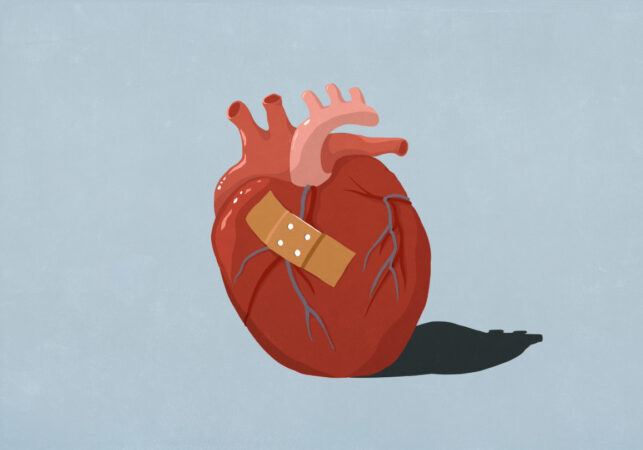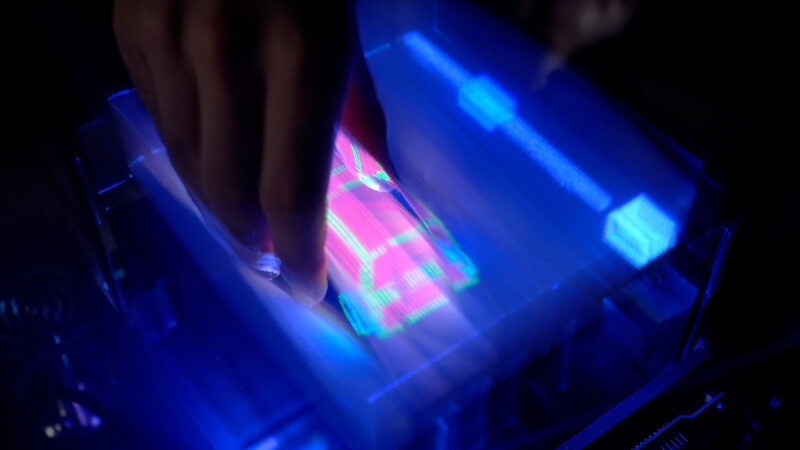Dying of heartbreak is a trope that often pops up in myth and fantasy. In Star Wars, Padmé Amidala may have died of a broken heart after her husband turned to the dark side, becoming Darth Vader. Shakespeare’s King Lear succumbs to heartbreak after hearing of the demise of his precious daughter Cordelia.
Drama aside, these characters might have died of takotsubo syndrome. That’s a short, intense dysfunction in a part of the heart called the left ventricle. And it can occur after extreme emotional or physical stress — making “heartbreak” both real and sometimes deadly.
A history of heartbreak
Death by broken heart has been a popular theme in fiction for a long time. Yet doctors only began recording real cases in the 1960s, says Trisha Singh. This heart doctor, or cardiologist, works at University Hospitals Dorset in England.
“It was very typically described as an elderly or a middle-aged woman who just lost a loved one,” Singh says. “A day or so afterwards, she died of heartbreak.”
Medical imaging technology has improved since then. That has allowed doctors to directly study the hearts of afflicted patients.
In many, the left ventricle balloons out. That’s the chamber that pumps oxygen-rich blood to the body. The ballooned shape reminded Japanese doctors of a takotsubo. This is a type of round jar used for catching lobsters and octopuses. So in 1990, doctors at Hiroshima City Hospital proposed the term takotsubo to describe the condition.
How does a heart break?
What triggers takotsubo syndrome is still something of a mystery.
One hypothesis is that a traumatic event causes a surge of stress hormones in the brain and adrenal glands. The left ventricle is loaded with receptors for these chemicals. So a sudden flood of them could cause its taut, elastic muscle to become loose and puffy. That would prevent it from delivering enough blood to the body.
Another hypothesis is that a stress response briefly “stuns” the heart. A third idea is that reduced levels of the hormone estrogen play a role. That’s because most cases of takotsubo syndrome are in older women. These women have usually gone through menopause — a stage of life when they stop menstruating. After menopause, they produce less estrogen than before.
Takotsubo syndrome is fairly rare. It accounts for only about 2 percent of people who seek medical care for an apparent heart attack. Peter Rahko recalls a case from the 1980s. He’s a cardiologist at the University of Wisconsin–Madison.
Rahko remembers an older woman was called to a hospital in rural Wisconsin. There, she was shown the body of her son, who had died in a car accident. “Within five minutes, she started having severe chest pain [and] collapsed on the floor,” Rahko says.
The woman was flown to Madison, where Rahko treated her. He snaked a catheter into her heart to see if something was blocking the arteries that supply blood to the heart muscle. That is what usually causes a heart attack. To his surprise, “her arteries were totally normal,” he says. “But her heart function was dramatically reduced.” In takotsubo syndrome, the heart vessels are often clear. In fact, most patients do not have classic risk factors for heart problems.
Looking back, Rahko realizes his patient had takotsubo. Today, reduced heart function with no clear signs of disease is a tip-off for this condition. A doctor will see if a patient has experienced acute stress. For instance, if they have been grieving a loss.
In some cases, the tragic event that triggers takotsubo syndrome is obvious. But even events with more long-term effects have been tipping points. Examples include the COVID-19 pandemic and earthquakes in New Zealand. Many patients, Singh notes, also have mental illnesses such as anxiety or depression.
Mending a broken heart
Though severe, takotsubo is quite short-lived and typically not fatal. About 4 percent of people die of the condition. About 75 percent fully recover after 10 days, as Rahko’s patient did. Many recover after only 48 to 72 hours.
“It’s absolutely incredible,” Singh says. She recalls one patient who came in with a severely impaired heart. “I came back and rescanned her six hours later,” Singh says. “And it had gone from severely impaired … to almost normal.”
The standard care for takotsubo is to treat the patient with medicines for heart failure. But since some people recover so quickly, “it raises a question,” Rahko says. “Should we even be bothering with trying to put people on these medications? Are they even going to do any good?” With basic medical support, like fluids and drugs to prevent blood clotting, the heart may unbreak itself.
Rahko says wouldn’t be surprised if some deaths from “grief” in history were takotsubo. When people didn’t have the knowledge of modern medicine, it was reasonable to think that “some god struck down somebody … and they dropped dead,” he says. Now “here’s one potential physiologic explanation.”

















